| Minivan; Built in USA |
|
|
| Good condition price range: $1,000 – $7,000* |
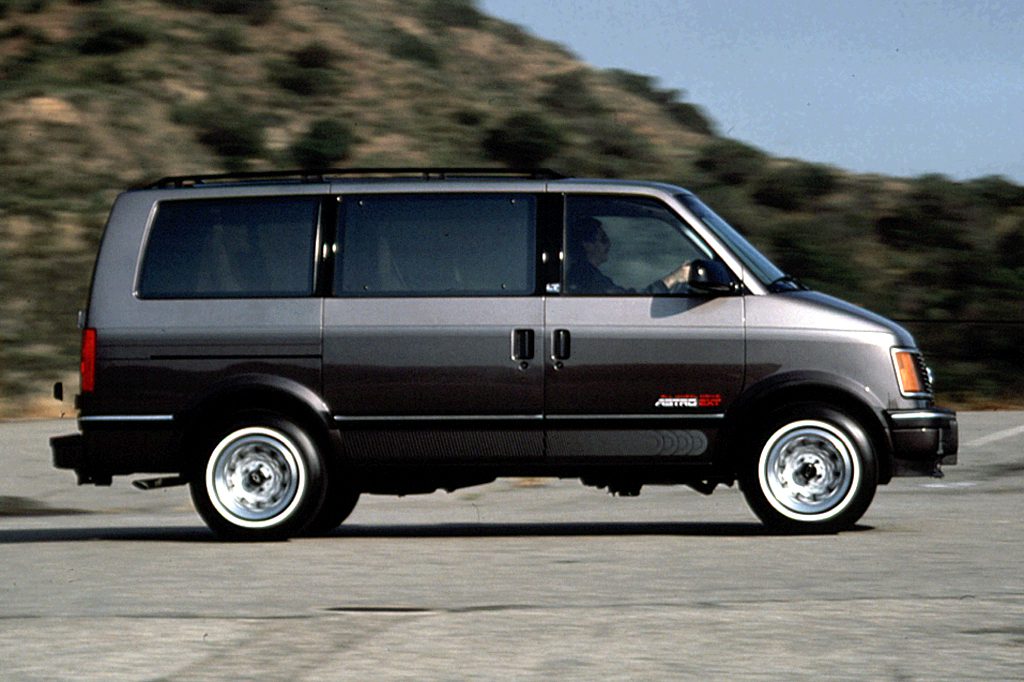
1991 Chevrolet Astro AWD extended length
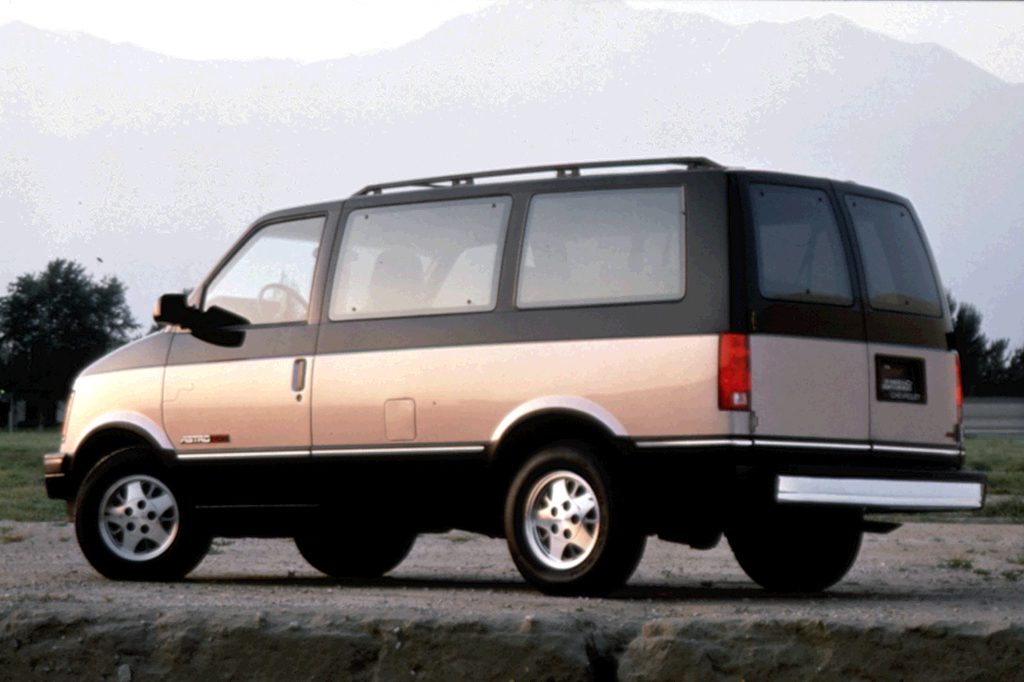
1993 Chevrolet Astro CL extended length
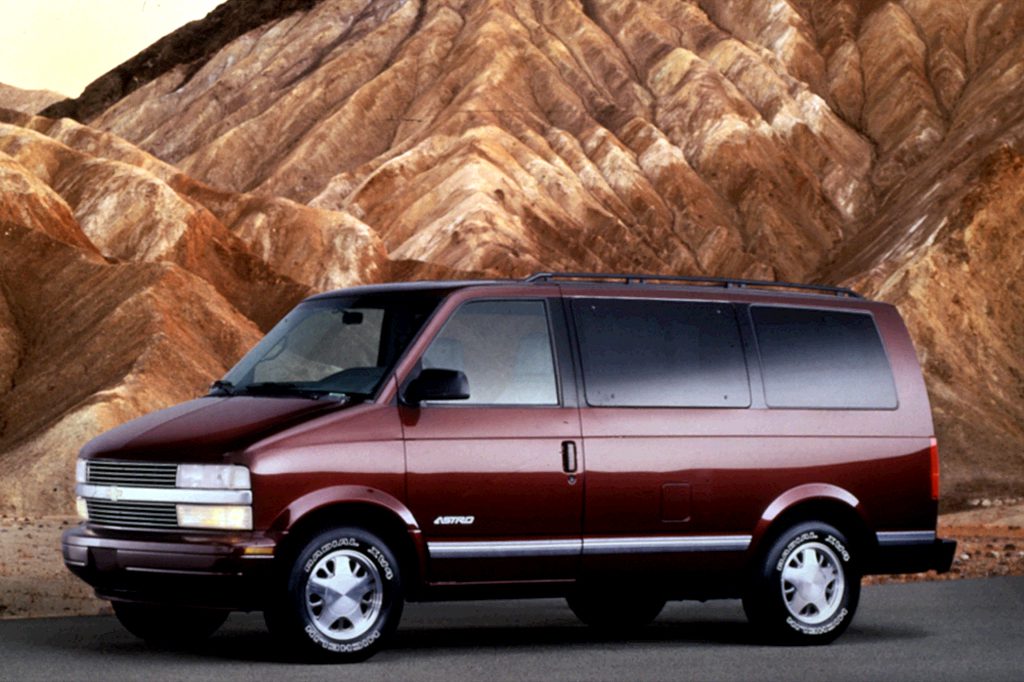
1995 Chevrolet Astro CL
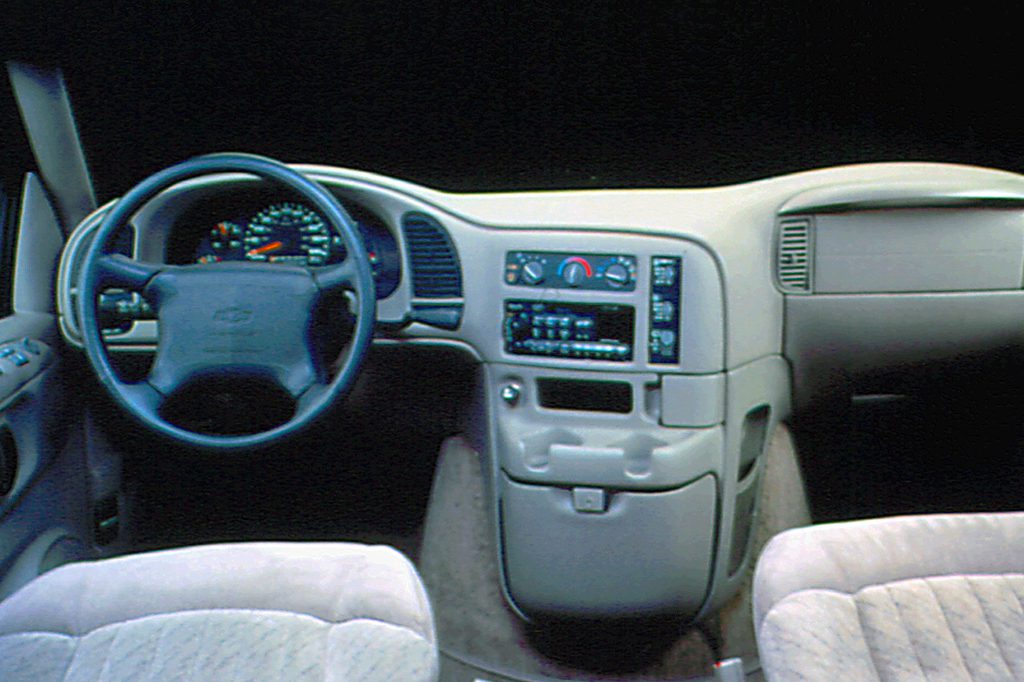
1996 Chevrolet Astro interior
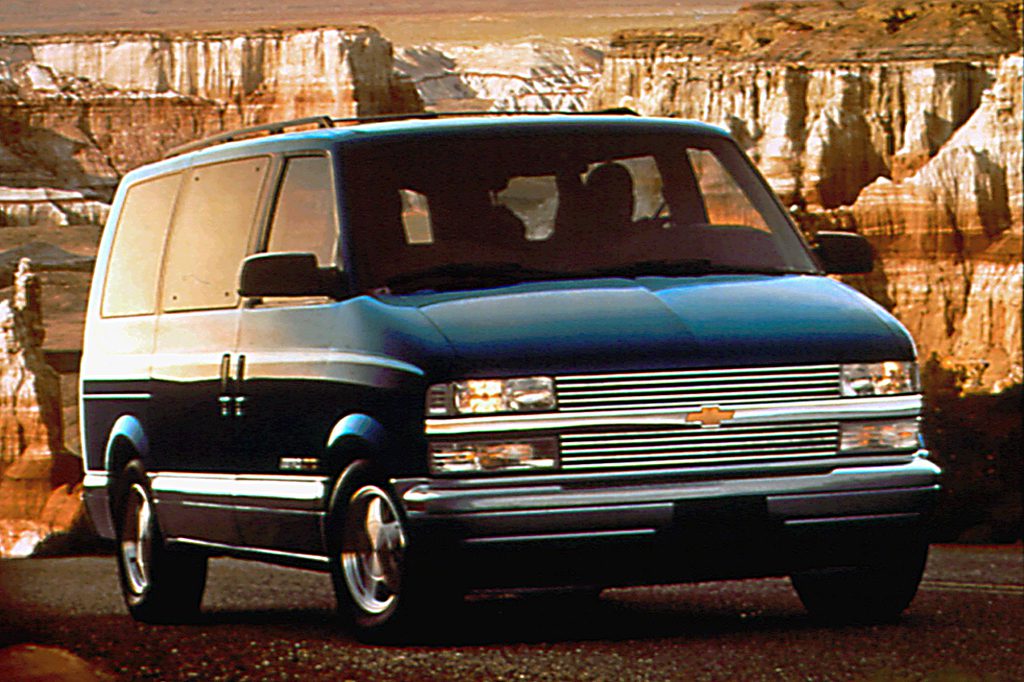
1997 Chevrolet Astro LT AWD
| Pros: |
|
| Cons: |
|
Like the now-extinct Ford Aerostar, the Astro and its GMC Safari cousin are truck-based vehicles, better suited to heavy-duty work than are front-drive minivans. Trucklike behavior could be a turnoff unless you need Astro’s brand of brawniness for towing or other demanding applications.
Overview
Introduced for 1985, Chevrolet’s rear-drive minivan and its GMC Safari counterpart are taller, tougher, and more trucklike than Dodge/Plymouth rivals (which are front drive). A properly equipped Astro could haul up to 6000 pounds. Five-passenger seating was standard, but Astros could be equipped to hold up to eight occupants. Starting in 1990, antilock brakes acted on all four wheels (front-disc/rear-drum). Full-time 4-wheel drive also arrived as an option for 1990. An extended-length body was added during the model year, with ten inches tacked onto the rear for nearly 19 extra cubic feet of cargo capacity.
Yearly Updates
| 1991 Astro A more powerful, high-output V6 became available in 2WD models during ’91. All outboard seats now had lap/shoulder belts. |
| 1992 Astro Still another high-output engine joined the Astro option list. This one developed 200 horsepower. A new “Dutch” rear-door option featured a one-piece glass liftgate with separately opening split panel doors below. |
| 1993 Astro Astro’s 4-speed automatic transmission gained electronic shift controls, plus a second-gear start feature for improved slippery-surface traction. The base engine gained 15 horsepower, and speedometers now were calibrated to 100 mph instead of 85. |
| 1994 Astro The driver-side airbag became standard in all Astros. Side-door guard beams went into front doors and the sliding side door, while a center high-mounted stoplamp was installed in the roof. |
| 1995 Astro Facelifted with a new grille and nose for 1995, all models now came with extended bodies and a 190-horsepower engine. CL and LT option groups featured new composite headlamps and body-colored fascias. |
| 1996 Astro A passenger-side airbag went into Astros for 1996, along with a new dashboard that contained rotary controls and a locking glovebox. Horsepower remained at 190 but torque dropped by ten pound-feet, peaking at lower rpm than before. New spark plugs were said to last 100,000 miles. A new engine cover increased front foot room and contained molded-in cupholders. |
| 1997 Astro Speed-sensitive power steering and daytime running lights went into the ’97 Astro. Optional leather upholstery became available later in the model year. |
| 1998 Astro Astro gets only exterior color changes and a revised transmission for ’98. |
| 1999 Astro Astro’s all-wheel-drive system was revised so that power was only sent to the front wheels when needed for maximum traction. Other changes included a standard overhead console on LS and LT trimmed models. |
| 2000 Astro Eight-passenger seating became standard this year, so no more 5-passenger models were available. A 7-passenger setup with two second-row buckets remained as an option. Chevrolet claimed that internal changes made the Astro’s engine quieter and smoother for 2000. A Tow/Haul mode was added for more-efficient shifting when carrying heavy loads. New standard features included headlamps that switch on automatically in low-light conditions, a larger fuel tank made of plastic instead of metal, and retained accessory power that permits operating electrical accessories for up to 20 minutes after shutting off the ignition. |
| 2001 Astro A tilt steering wheel, cruise control, CD player, remote keyless entry, and power windows, mirrors and locks were newly standard in 2001. |
| 2002 Astro Cargo models offered remote keyless entry and a rear heater for 2002. |
| 2003 Astro The standard antilock brakes are upgraded to an all-disc setup and wheels are increased by one inch to 16-inches on all models. |
| 2004 Astro There were no significant changes made in 04. |
| 2005 Astro There were no significant changes made in 04. |
